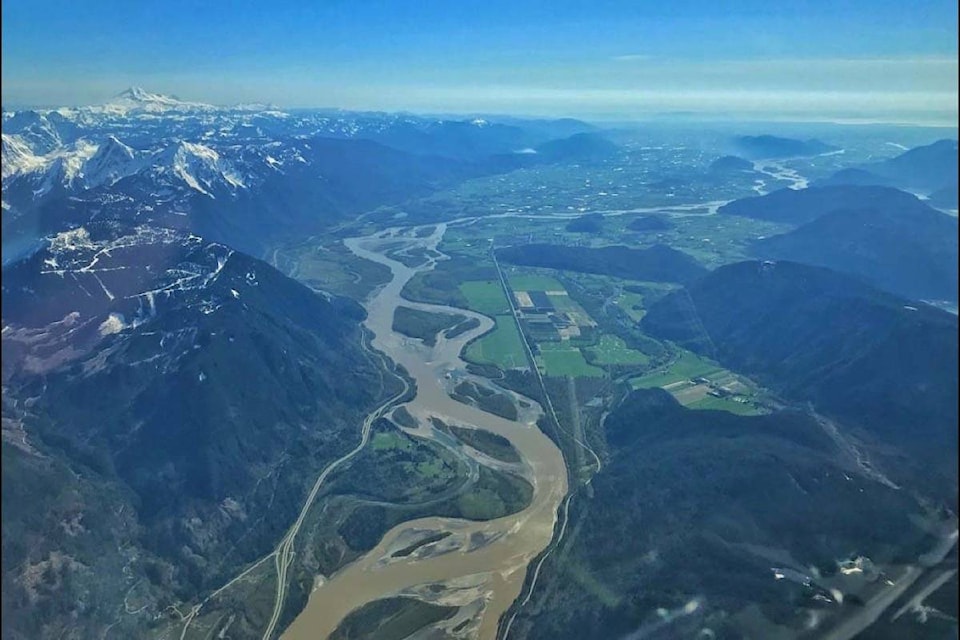Anyone driving over the Agassiz Rosedale bridge will notice the sandbars islands once rising from the Fraser River have been consumed by the strong current.
The water is rising as it does every year, invoking necessary questions about flooding and safety preparation. Fraser Basin Council senior program manager Steve Litke told Black Press that it is likely there will be more frequent Fraser River and coastal floods in the future thanks to climate change, and a 2016 study by the council estimated economic impacts of a major flooding event in the Lower Mainland at $20 to $30 million.
READ: Major Fraser River flood could cause $30 billion in economic impact
Last year’s wildfires could have an impact on flood risks. Dead timber isn’t as good at soaking up melting snowpack water, resulting in higher than average run off for B.C. waterways.
And snowpack levels have been slightly higher than average this season too. On April 1, the B.C. River Forecast Centre reported that the Fraser River Basin was sitting at 108 per cent of normal based on historical averages.
But the Kent Harrison Joint Emergency Preparedness Committee has a handle on the risks, said emergency program coordinator Gerald Basten.
“Currently the water levels are doing just what we want them to.”
When it got warmer, the water rose a metre or two, Basten explained. The cooler weather that followed helped to maintain a slow runoff from snowpacks and surrounding tributaries.
“It stopped snowing, for the most part, in the mountains…so we’re getting rid of large volumes of snowpack in the water right now which is good,” he added. “Once we get closer to the end of May and the beginning of June – that’s when the weather will heat up to more extremes.”
“That’s when the rapid melt happens and that’s where problems start.”
READ: B.C.’s snowpack continues to increase, melting delayed
With current technology, it’s unlikely that the area could be taken by surprise like it was during the infamous flood of 1948.
Basten said water levels all the way from Prince George to Vancouver are monitored closely, and Agassiz Harrison residents would likely have a few days notice if evacuation became necessary, unless floods were caused by severe storms and rain. Basten said 80 to 100 millimetres of rain in 24 to 48 hours could have serious consequences, as could high levels of heat – temperatures above 25 degrees for more than five days could bring on rapid melt, and potential floods.
But both Kent and Harrison have safeguards in place.
The Village has flood pumps near the Lake, and just finished testing its aqua dams – 35 sections of 50 to 100 foot long temporary dikes protecting flood-vulnerable areas.
“Aqua dams are quick to deploy and considerably faster to install than sandbag dikes,” stated Basten in a press release from the Village. “This reliable, reusable and easy to install flood management system is a key element of the Village’s overall emergency preparedness strategy.”
Kent uses kilometres of dikes to protect Agassiz and Harrison Mills from flood damage, and both municipalities keep a supply of sandbags and other supplies stocked for flood season.
In the event that a warning, or even evacuation was needed, Basten said communication to residents would come through municipal websites, local media and radio, or even door to door warnings if the matter was urgent.
Preparing your home
Everyone should take their own precautions to be emergency-prepared, said deputy emergency program coordinator Derek Dubiellak.
“It’s important, in general, for homeowners to be prepared for any emergency, whether that be an earthquake, fires… they have got to think in a 72-hour time frame,” he said. “Have 72 hours worth of food, water, a first aid kit, flashlights and batteries.”
“If we do have a major flood, emergency services will be going through and dealing with the most dire cases first. People need to be prepared and ready to fend for themselves for a little bit until they can be rescued.”
With files from Paul Henderson and Jennifer Feinberg.
